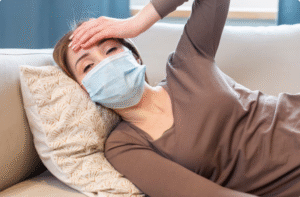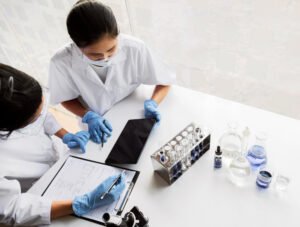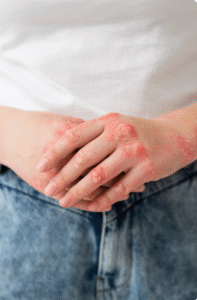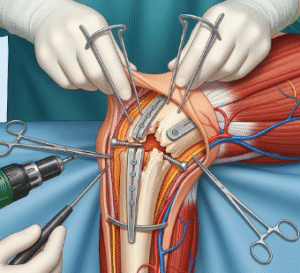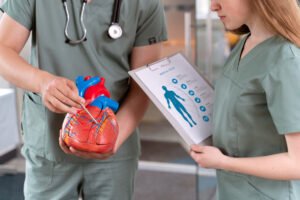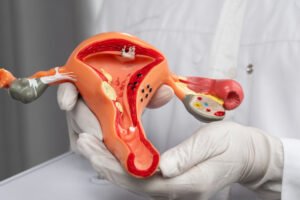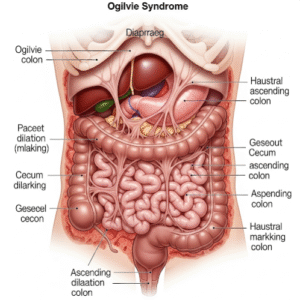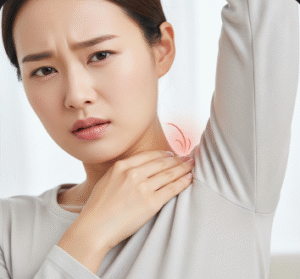➤ Overview
Testicular pain, also known as orchialgia, refers to discomfort or pain in one or both testicles. The pain can be acute or chronic, mild or severe, and may occur suddenly or gradually. It is not always a primary testicular issue, as pain may radiate from the abdomen, groin, or lower back.
In South Korea, testicular pain is evaluated by urologists and primary care physicians using advanced diagnostics to determine the underlying cause, which may include infection, inflammation, trauma, or vascular issues. Early diagnosis is crucial to prevent complications such as infertility, chronic pain, or testicular loss.
➤ Key Facts
→ Testicular pain can affect males of all ages, from infants to the elderly.
→ Pain may be sudden (acute) or persistent (chronic).
→ Causes can range from mild infections to medical emergencies like testicular torsion.
→ Pain may radiate to the groin, lower abdomen, or back.
→ Associated symptoms can help distinguish serious conditions from minor issues.
→ In Korea, evaluation includes physical examination, ultrasound imaging, and laboratory testing.
→ Early intervention improves pain management, fertility preservation, and overall outcomes.
➤ What is Testicular Pain?
Testicular pain refers to discomfort or aching in the testicles, often classified as:
→ Acute testicular pain – Sudden onset, often due to torsion, trauma, or infection.
→ Chronic testicular pain – Persistent or intermittent discomfort lasting longer than 3 months.
→ Referred pain – Pain originating from the abdomen, groin, or kidneys.
→ Unilateral pain – Affecting one testicle, often indicating localized issues.
→ Bilateral pain – Affecting both testicles, which may suggest systemic or infectious causes.
In Korea, urologists assess pain severity, duration, onset, and associated symptoms to determine the underlying condition accurately.
➤ What Symptoms are Related to Testicular Pain?
Testicular pain may present alongside other local and systemic symptoms:
→ Swelling or enlargement of the testicle → May indicate infection, hydrocele, or torsion.
→ Redness or warmth → Suggestive of inflammation or infection.
→ Nausea or vomiting → Often occurs in acute conditions like torsion.
→ Fever → May indicate infection such as epididymitis or orchitis.
→ Urinary symptoms → Burning, frequency, or urgency if infection is present.
→ Discharge from the urethra → Sign of sexually transmitted infection.
→ Groin or lower abdominal pain → Radiating pain from the testicle or associated structures.
→ Tenderness to touch → Localized pain on palpation.
→ Skin changes → Bruising or trauma-related discoloration.
➤ What Causes / Possible Causes?
Testicular pain may result from infectious, traumatic, inflammatory, vascular, or systemic causes:
→ Testicular torsion – Twisting of the spermatic cord causing sudden, severe pain; a medical emergency.
→ Epididymitis – Inflammation of the epididymis often due to bacterial or sexually transmitted infection.
→ Orchitis – Infection of the testicle, sometimes caused by mumps virus.
→ Trauma or injury – Direct blow or injury to the scrotum or groin.
→ Hernia – Inguinal hernia may cause referred testicular pain.
→ Kidney stones or urinary tract infection – Pain may radiate to the testicle.
→ Varicocele or hydrocele – Enlarged veins or fluid accumulation causing discomfort.
→ Chronic idiopathic orchialgia – Persistent pain without identifiable cause.
→ Tumors – Rarely, testicular cancer may present with mild or intermittent pain.
➤ When Should I See My Doctor?
Immediate medical attention is crucial for acute, severe, or persistent testicular pain:
→ Sudden onset of severe pain in one testicle.
→ Swelling, redness, or tenderness in the scrotum.
→ Associated nausea, vomiting, or fever.
→ Pain following trauma or injury.
→ Persistent or recurrent pain lasting more than a few days.
→ Changes in testicle size or shape.
→ History of urinary symptoms or sexually transmitted infection.
→ In Korea, rapid evaluation ensures timely management of emergencies like torsion or infection.
➤ Care and Treatment
Treatment of testicular pain focuses on addressing the underlying cause and relieving symptoms:
→ Testicular torsion – Emergency surgery (orchidopexy) to restore blood flow.
→ Epididymitis or orchitis – Antibiotics, anti-inflammatory medications, and supportive care.
→ Pain management – NSAIDs or analgesics for relief.
→ Rest and scrotal support – Elevation and supportive underwear.
→ Ice packs – Reduce swelling and discomfort.
→ Surgical intervention – For hernia repair, varicocele ligation, or tumor excision.
→ Lifestyle modifications – Avoid strenuous activity until resolution.
→ Follow-up care – Monitoring for recurrence, infection resolution, or complications.
➤ Treatment Options in Korea
South Korea provides advanced diagnostics and treatment options for testicular pain:
Diagnosis in Korea
→ Physical examination – Assessment of scrotum, testicles, and inguinal area.
→ Ultrasound imaging – Detect torsion, inflammation, or tumors.
→ Laboratory tests – Urine, blood, and STI screening if infection is suspected.
→ CT or MRI – In complex cases with referred abdominal pain.
Medical Treatments in Korea
→ Pharmacological therapy – Antibiotics, anti-inflammatory medications, and analgesics.
→ Surgical intervention – Emergency or elective surgery for torsion, hernia, or tumor.
→ Supportive measures – Scrotal support, ice therapy, and rest.
Advanced Therapies in Korea
→ Minimally invasive surgery – Laparoscopic procedures for hernia or varicocele.
→ Specialized urology clinics – Comprehensive evaluation and follow-up care.
→ Integrated care teams – Collaboration among urologists, radiologists, and pain specialists.
Rehabilitation & Support in Korea
→ Education on self-examination, early symptom recognition, and preventive measures.
→ Support for fertility preservation if treatment may impact reproductive function.
→ Follow-up care for chronic pain management or post-surgical recovery.


